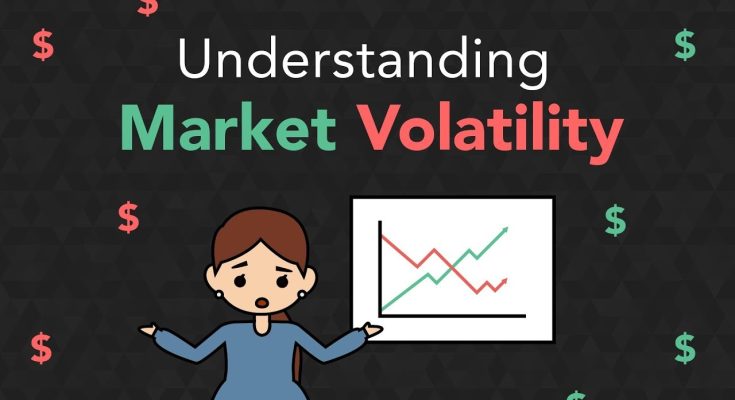Market volatility is one of those financial concepts that often sparks anxiety, especially when headlines highlight dramatic swings in stock prices or sudden drops in major indices. But volatility, at its core, is simply a measure of how much and how quickly the value of an asset or market fluctuates over time. It reflects uncertainty, sentiment, and reaction to events—economic, political, or even psychological. Understanding volatility is not about predicting every twist and turn, but about recognizing what drives it, how it behaves, and what it means for investors and businesses navigating the financial landscape.
The first step in grasping market volatility is to appreciate that it is a natural and unavoidable part of investing. Markets are influenced by countless variables, from interest rate decisions and inflation data to geopolitical tensions and corporate earnings reports. These factors can shift expectations and trigger buying or selling activity, which in turn affects prices. For example, if a central bank signals a potential rate hike, investors might reassess the value of growth stocks, leading to a sell-off that causes prices to drop. That movement, whether sharp or gradual, contributes to volatility. It’s not inherently good or bad—it’s simply a reflection of change.
Volatility can be measured in different ways, but one of the most common metrics is standard deviation, which quantifies how much an asset’s returns deviate from its average over a given period. A high standard deviation indicates wide swings, while a low one suggests more stable performance. Another widely referenced indicator is the VIX, often called the “fear index,” which tracks expected volatility in the S&P 500 based on options pricing. When the VIX spikes, it typically signals heightened investor concern or uncertainty. These tools don’t forecast direction, but they do offer insight into the market’s mood and potential turbulence.
It’s important to distinguish between short-term volatility and long-term trends. Markets may experience daily or weekly fluctuations that seem dramatic in isolation but are relatively minor in the broader context. For instance, a 2 percent drop in a major index might grab headlines, but over a year, that movement could be a blip in an otherwise upward trajectory. Long-term investors often view volatility as noise, focusing instead on fundamentals and strategic goals. On the other hand, traders and portfolio managers may see volatility as opportunity, using it to time entries and exits or hedge positions. The key is aligning your perspective with your objectives.
Emotions play a significant role in how volatility is perceived and responded to. Fear and greed are powerful drivers of market behavior, often amplifying swings beyond what fundamentals justify. When prices fall, panic selling can accelerate declines, while euphoric buying during rallies can inflate valuations. This feedback loop creates volatility that is more about psychology than economics. Recognizing this dynamic helps investors avoid reactionary decisions and maintain discipline. For example, during the early stages of the COVID-19 pandemic, markets experienced extreme volatility as uncertainty gripped investors. Those who stayed the course and focused on long-term fundamentals often saw their portfolios recover as conditions stabilized.
Diversification is one of the most effective strategies for managing the impact of volatility. By spreading investments across asset classes, sectors, and geographies, investors can reduce the risk that any single event will derail their entire portfolio. While diversification doesn’t eliminate volatility, it helps smooth out returns and provides a buffer against concentrated losses. Businesses, too, can apply this principle by diversifying revenue streams or supply chains to mitigate exposure to market shocks. The goal is not to avoid volatility entirely, but to build resilience against its effects.
Understanding market volatility also involves recognizing its cyclical nature. Periods of low volatility often precede spikes, and vice versa. Economic expansions tend to bring stability, while downturns introduce uncertainty. Policy changes, technological disruptions, and global events can all shift the volatility landscape. For example, the transition from low interest rates to a tightening cycle can increase volatility as markets adjust to new cost structures and valuation models. Staying informed about macroeconomic trends and maintaining a flexible strategy can help investors and businesses adapt to these shifts without being caught off guard.
Risk tolerance is another crucial factor in navigating volatility. Every investor has a different capacity for handling fluctuations, and understanding your own threshold is essential for building a portfolio that aligns with your comfort level. Younger investors with longer time horizons may be more willing to endure volatility in pursuit of higher returns, while retirees may prioritize stability and income. Businesses, too, must assess their financial resilience and strategic flexibility when facing volatile conditions. This self-awareness informs decisions about asset allocation, liquidity management, and contingency planning.
Ultimately, understanding market volatility is about context. It’s about seeing beyond the headlines and recognizing the forces at play. Volatility is not a signal to retreat—it’s a reminder that markets are dynamic, influenced by a complex interplay of factors. By staying informed, maintaining perspective, and aligning strategies with long-term goals, investors and businesses can navigate volatility with confidence rather than fear. It becomes not a threat, but a feature of the financial landscape—one that, when understood, can be managed and even leveraged to advantage.



